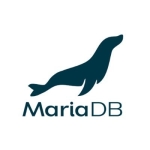What is our primary use case?
We are using on-premises, but I have also done some research in the last six months trying to go towards the cloud. We want to upgrade it because we also did the same thing with another company we are working with which is using the Sage X3 Cloud. We started with Sage Evolution, but now we are also moving to Save X3 Cloud.
How has it helped my organization?
It helped us because some of the people who are busy supporting us are not local. We opened SAP HANA more for the management. We even got some tenders that we were able to submit documents online and sending it to our servers. The key value is that we can get more tenders because of the lower cost while giving a better product or service. This is possible only because of our use of SAP HANA.
What is most valuable?
The most value for us was in terms of using it to issue tenders online. We host our server, but it is open to the public, so clients who want to buy those tenders were able to go online, put their tender documents up, and we could evaluate them using SAP. We were basically able to do pre-qualifications using SAP. After that, we could send notifications to people who qualified and go through the non-qualified people using SAP. That feature is very effective in terms of supplier relationship management. We can issue tenders and people put their big documents through SAP HANA, which helps with communication and gives them notifications.
What needs improvement?
One is the menu. There is a part of the menu where the button should be "reject." The interface is a little bit hard to customize. You almost have to consult the SAP original developer to change it. Now we have to consult SAP just to do some interface changes. You expect it to be easy to get into the menu, but you can't. Instead of changing the console you wanted to reject it, for example, if a tender that does not meet a specific qualification. Basically, the customization of the interface needs to be more friendly.
I think we are also going towards mobile technology, so I would like to see the integration of a mobile app.
Buyer's Guide
SAP HANA
March 2025
Learn what your peers think about SAP HANA. Get advice and tips from experienced pros sharing their opinions. Updated: March 2025.
850,671 professionals have used our research since 2012.
For how long have I used the solution?
We've been using SAP HANA for two years.
What do I think about the stability of the solution?
It's quite stable. There haven't been many cases of bugs, crashing, or freezing. It has been quite stable.
What do I think about the scalability of the solution?
Its scalability is good, in terms of meeting our needs.
How are customer service and support?
I think technical support is okay. They should be more focused on updating the knowledge transfer for people who have experience with SAP in general but need to transition their knowledge to the local client. This part is a little bit challenging.
Which solution did I use previously and why did I switch?
We used another solution, but it was more of a client-oriented system, where you get developers to make and customize them for you. It's more local or in-house than regular IT systems. When you only have one company developer to make some products for you and he is the only one who can support you, it's a little bit of a challenge. With SAP HANA, if you get stuck somewhere you can call any other SAP HANA partner.
How was the initial setup?
It was easy for us to set up, because we had that QA code, in terms of the system analysis and system requirements. Once we got the system requirements, we were able to connect to the hardware and software. We could make sure before we did the implementation that we had the right environment.
What other advice do I have?
The main lesson is the importance of ERP capability, stability, and speed. The other lesson is about knowledge transfer because that is how you learn.
At the end of the day, I like it because it's one of the affordable ERP systems. I would rate is as eight of ten.
Disclosure: I am a real user, and this review is based on my own experience and opinions.

















